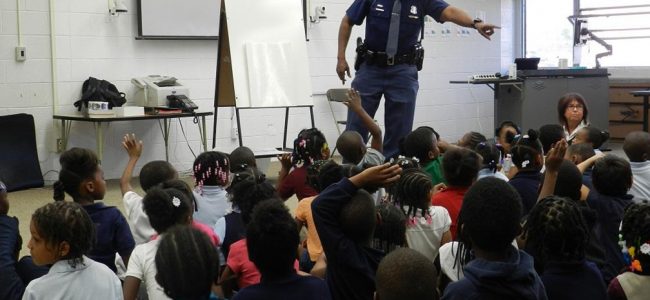Hiring the right educators is no small feat. As schools strive to maintain high academic standards, they often face the pressing challenge of attracting top-calibre teachers in an increasingly competitive market. Balancing the need for exceptional educators with time constraints and resource limitations can feel overwhelming.
What if there were proven strategies to simplify this process while ensuring you attract passionate, qualified teachers who align perfectly with your school’s vision? In this guide, we’ll explore actionable tips that address the common hurdles of teacher recruitment, helping you build a robust hiring strategy tailored to your institution’s needs.

From crafting compelling job listings to cultivating a positive school culture, each step in this process is designed to support your mission of providing quality education.
Whether you’re a school administrator, HR professional, or part of a hiring committee, this post will equip you with insights and tools to streamline your recruitment efforts. Let’s unlock the secrets to finding and retaining the best educators in the field.
Understanding the Current Teacher Recruitment Landscape
The teacher recruitment process is shaped by a rapidly changing landscape. A global shortage of qualified educators has increased competition among schools, with institutions trying to attract the same pool of talent. This challenge is compounded by rising expectations for competitive salaries, career development opportunities, and work-life balance.
Key Challenges in Teacher Recruitment:
- Limited supply of specialised educators in subjects like STEM and special education.
- Increasing demands for schools to align recruitment with diversity and inclusion goals.
- Budget constraints that limit schools’ ability to offer competitive compensation packages.
Adapting to these changes means schools must adopt innovative recruitment strategies that go beyond traditional job advertisements. By leveraging new tools and platforms, schools can attract a broader and more qualified pool of candidates.
Crafting an Attractive Job Listing
Your job listing is often the first impression potential candidates have of your school. A well-crafted description not only attracts qualified candidates but also conveys the values and culture of your institution.
Tips for Writing Compelling Job Descriptions:
- Be Specific: Clearly outline the responsibilities, qualifications, and skills required for the role.
- Highlight Benefits: Mention unique perks such as professional development opportunities, mentorship programmes, and a supportive work environment.
- Optimise for SEO: Use targeted keywords like teacher recruitment and educators to ensure your listing appears in relevant search results.
- Showcase Your School Culture: Include a brief overview of your school’s mission and values to help candidates envision themselves as part of your community.
Leveraging Modern Recruitment Channels
Gone are the days when traditional job boards were the sole option for finding candidates. Modern recruitment channels allow schools to connect with potential hires in innovative and efficient ways.
Effective Channels for Teacher Recruitment:
- Social Media Platforms: Use platforms like LinkedIn, Facebook, and Twitter to reach a wider audience and showcase your school’s culture through engaging content.
- Educational Partnerships: Collaborate with teacher training institutions and universities to identify top talent early.
- Specialised Recruitment Agencies: Consider partnering with agencies that specialise in placing educators, saving time and effort.
- Alumni Networks: Building strong relationships with your alumni can create a dependable pool of experienced and motivated candidates who are already familiar with your school’s values and culture. Schools can engage alumni through newsletters, reunions, and social media groups, fostering a sense of loyalty and connection that translates into recruitment opportunities.
These methods not only broaden your reach but also position your school as a forward-thinking institution that values connectivity and innovation.
Building a Positive School Culture to Attract Talent
Teachers want to work in an environment where they feel valued, supported, and inspired. A positive school culture is not just a retention strategy—it’s a powerful recruitment tool.

Ways to Promote a Supportive Culture:
- Foster Inclusivity: Prioritise diversity and equity within your staff. Recent data from the Australian Institute for Teaching and School Leadership (AITSL) highlights that school culture influences career intentions differently for classroom teachers and senior leaders, underscoring the critical role of leadership in cultivating a positive environment.
- Implement Mentorship Programmes: Pair new teachers with experienced mentors who can offer structured guidance during their first year. This can include regular check-ins, lesson planning support, and classroom management advice.
- Celebrate Achievements: Create opportunities for professional growth through workshops, conferences, and certifications. The Association of Independent Schools of New South Wales (AISNSW) notes that mentorship and cultural alignment are crucial factors in reducing teacher attrition.
Showcasing these aspects during recruitment helps potential candidates see your school as a place where they can thrive both personally and professionally.
Streamlining the Recruitment Process
An efficient and transparent recruitment process reflects positively on your school and increases the likelihood of attracting top talent.
Steps to Optimise Recruitment:
- Simplify Application Procedures: Avoid overly complicated forms and ensure candidates can apply quickly and easily.
- Communicate Clearly: Keep candidates informed at every stage of the process, from application to onboarding.
- Leverage Technology: Implement applicant tracking systems to streamline application reviews and scheduling.
By ensuring your process is seamless, you’ll stand out as a school that values candidates’ time and effort.
Retention as Part of Recruitment
Retention and recruitment are two sides of the same coin. A strong retention strategy reduces the frequency of recruitment needs and boosts your school’s reputation as an employer of choice.
Retention Strategies That Support Recruitment:
- Offer ongoing professional development opportunities to keep teachers engaged.
- Create clear pathways for career advancement.
- Provide resources that support work-life balance, such as flexible schedules and wellness programmes.
Investing in your current staff’s satisfaction will naturally attract new candidates who value stability and growth.
Measuring Success and Improving Recruitment Strategies
To ensure your recruitment efforts remain effective, it’s important to track their success and adjust strategies as needed.
Metrics to Monitor:
- Time-to-Fill: Measure the time it takes to fill open positions.
- Quality of Hires: Evaluate hires based on performance assessments and retention rates.
- Retention Rates: Track the retention of newly hired teachers over time.
Tools and Software to Use:
- Applicant Tracking Systems (ATS): Tools like Greenhouse and BambooHR streamline the hiring process, track applications, and manage candidate pipelines efficiently.
- Performance Management Platforms: Solutions such as Cornerstone and Workday help evaluate the long-term performance of hires and provide insights into their impact.
- Survey Tools: Use platforms like SurveyMonkey or Google Forms to collect feedback from new hires about their recruitment experience, helping identify areas for improvement.
Using data-driven insights and these tools allows you to refine your approach, ensuring long-term success in building a strong teaching team.
Empowering Your School with Exceptional Educators
Recruiting outstanding educators goes beyond filling vacancies—it’s about shaping the future of your school and ensuring long-term success. By embracing strategies such as crafting detailed job listings, utilising modern recruitment channels, and building a positive school culture, your institution can stand out in today’s competitive education landscape.

Now is the time to take action. Whether it’s implementing mentorship programmes, streamlining your recruitment process, or investing in technology to track success, each step will bring you closer to building a passionate and dedicated teaching team. The results will not only enhance your school’s reputation but also enrich the educational experiences of your students.
Don’t leave your recruitment strategies to chance. Explore partnerships with specialised recruitment services like Francis Orr or consult experts to refine your approach. Together, let’s ensure your school becomes a beacon for top-calibre educators who share your vision of excellence in education.









